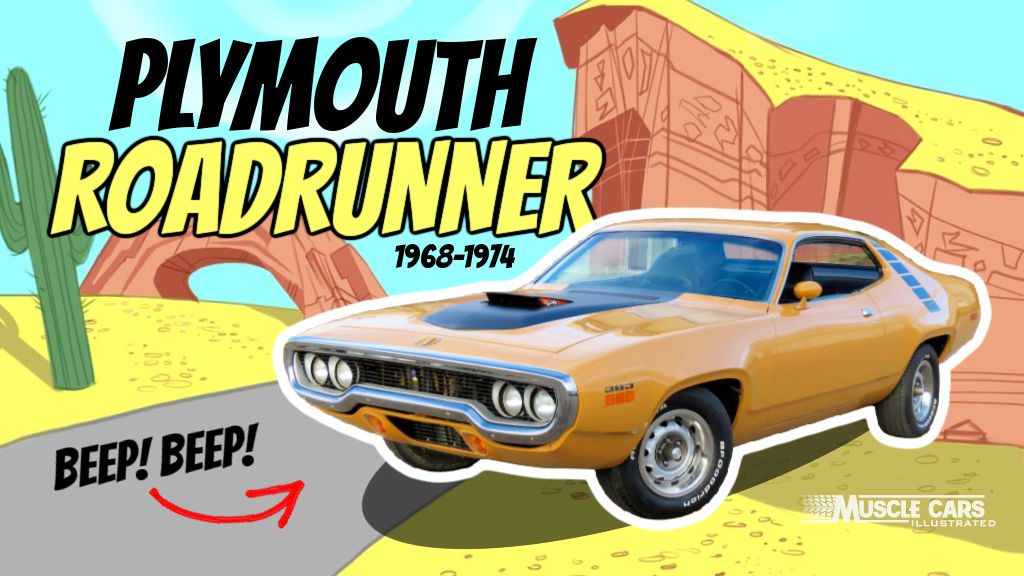
The Plymouth Road Runner is one of the most recognized and desired American muscle cars that Plymouth produced from 1968 to 1980.
It was designed to be a no-frills, high-performance muscle car affordable for the average person—hovering around a $3,000 sticker price.
Plymouth named it after the famous Warner Bros. cartoon character, and it quickly became a hit with car buyers across the United States and Canada.
The Road Runner shared the Belvedere, Satellite, and Volare platforms during its run. It was available with several different engine options over the years, including a 383 cubic inch V8 and a 426 Hemi V8.
Depending on the year, it also had various transmissions, including a three-speed manual, a four-speed manual, and a three-speed automatic.
Let’s look at a model breakdown of each year of the Plymouth Road Runner during the Muscle Car Era from 1968-1974, shall we?
Table of Contents
Evolution of the Plymouth Road Runner
From 1968 to 1974, the Road Runner rapidly evolved from a budget-friendly muscle car into a dominant force in the American automotive landscape. This review will examine each model year and explore the enhancements that solidified its place as an iconic muscle car.
First Generation: 1968-1970
The first generation Plymouth Roadrunner was constructed as a straightforward muscle car, utilizing the Belvedere platform and equipped with a 383 cubic inch V8 engine and standard heavy-duty suspension, manual transmission, and bench seats. It also featured a distinctive “Beep-Beep” horn, and an optional 426 Hemi engine was available for those seeking greater performance.
1968 Road Runner
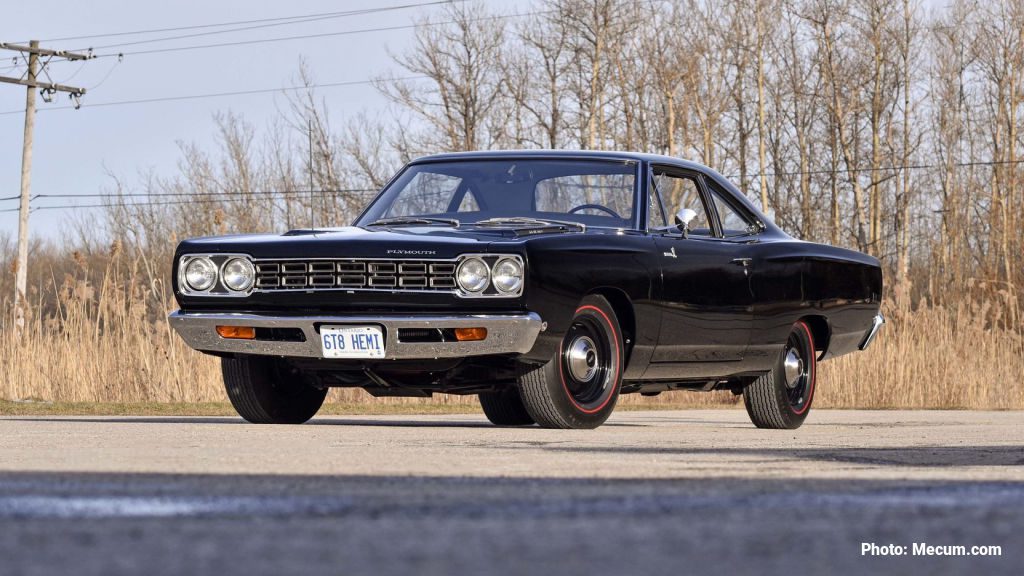
First introduced as a mid-year release, the 1968 Plymouth Road Runner was a boxy and budget-friendly supercar. It featured a distinctive horn that sounded like the “beep-beep” of the cartoon character. The Road Runner also had a unique hood with two simulated air scoops. Engine options included a 383 cubic inch V8 engine, producing 335 horsepower and 425 lb-ft of torque, and a 426 Hemi V8 engine, producing 425 horsepower and 490 lb-ft of torque. The 1968 Road Runner was available as a two-door coupe and a two-door hardtop.
- Wheelbase: 116 inches
- Weight: 3,220-3,420 pounds
- Number Built: 44,313
- Base Price: $2,966
Production Numbers
| Body Style | Engine | Production Numbers |
| Coupe | 383 | 28,138 |
| 426 | 840 | |
| Hardtop | 383 | 15,166 |
| 426 | 169 | |
| Total | 44,313 |
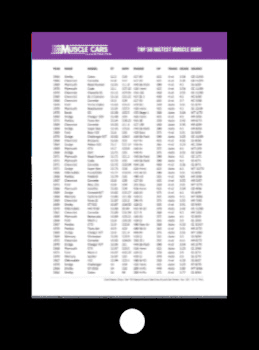
Get The Top 50 Fastest Muscle Cars chart. Includes year, model, engine, 1/4 mile times, and more—absolutely free!
1969 Road Runner
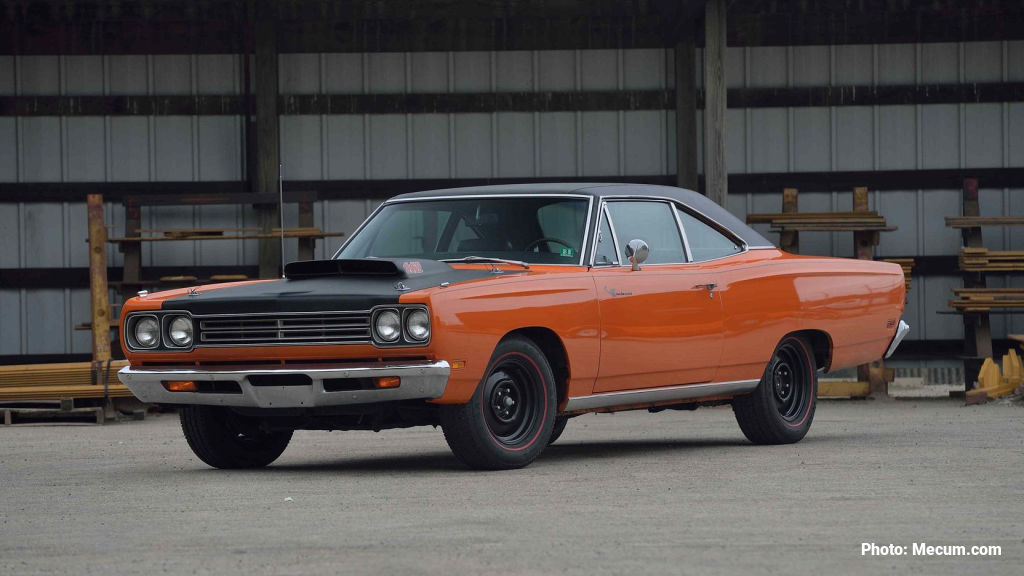
In 1969, the Plymouth Road Runner received several updates, including a new grille, taillights, and rectangular side markers. Engine options included a 383 cubic inch V8 engine, producing 335 horsepower and 425 lb-ft of torque; a 440 cubic inch V8 engine with three two-barrel carburetors, producing 375 horsepower and 480 lb-ft of torque; and a 426 Hemi V8 engine, producing 425 horsepower and 490 lb-ft of torque. The 1969 Road Runner was available as a two-door coupe, a two-door hardtop, or a two-door convertible painted in standard or High Impact Paint Colors. 1969 marked the peak of production, with Plymouth producing 84,420 units and being awarded the Motor Trends Car of the Year award.
- Wheelbase: 116 inches
- Weight: 3,375-3,780 pounds
- Number Built: 81,105
- Base Price: $3,027
Production Numbers
| Body Style | Engine | Production Numbers |
| Coupe | 383 | 31,397 |
| 426 | 356 | |
| 440+6 | 615 | |
| Hardtop | 383 | 45,629 |
| 426 | 421 | |
| 440+6 | 797 | |
| Convertible | 383 | 1,880 |
| 426 | 10 | |
| Total (USA) | 81,105 |
1970 Road Runner
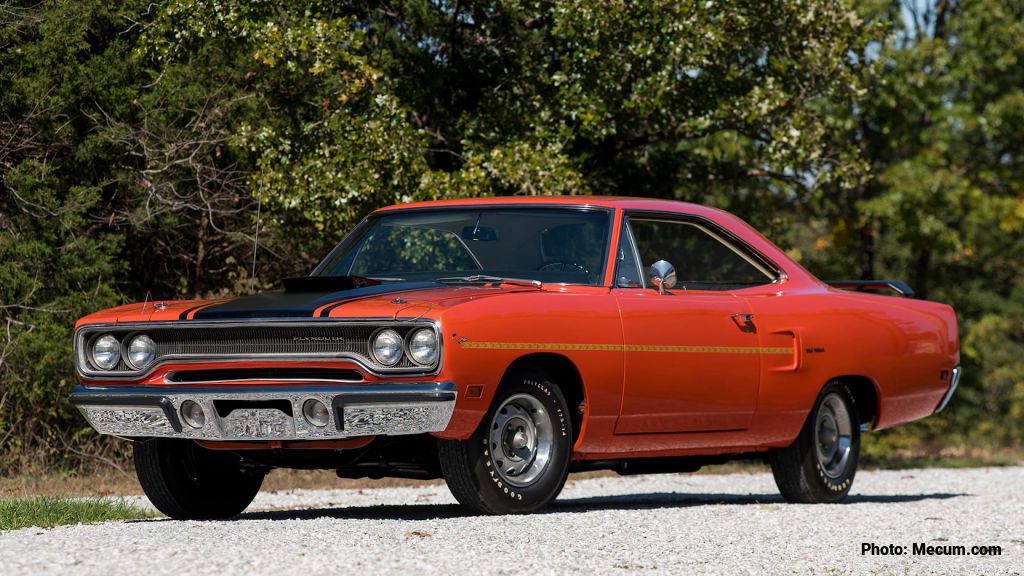
The 1970 Plymouth Road Runner underwent some styling updates, including the bumpers and grille. Engine options included a 383 cubic inch V8 engine, producing 335 horsepower and 425 lb-ft of torque; 440 cubic inch V8 engine, producing 375 horsepower and 480 lb-ft of torque; a 426 Hemi V8 engine, producing 425 horsepower and 490 lb-ft of torque. The 1970 Road Runner was available as a two-door coupe, a two-door hardtop, or a two-door convertible—the second and final year of the convertible.
The 1970 Plymouth Roadrunner was a standout year for the muscle car, thanks in large part to the introduction of the Superbird. This iconic model featured a pointed nosecone and a towering rear wing, making it instantly recognizable. The Superbird was built for one purpose: to win NASCAR races. It was equipped with a 426 Hemi engine and various aerodynamic enhancements, allowing it to reach incredible speeds on the track. While only less than 1,500 Superbirds were produced, its unique design and racing success have made it a highly sought-after collector’s item for muscle car enthusiasts.
- Wheelbase: 116 inches
- Weight: 3,440-3,950 pounds
- Number Built: 36,861
- Base Price: $3,271
Production Numbers
| Body Style | Engine | Production Numbers |
| Coupe | 383 | 14,057 |
| 426 | 74 | |
| 440+6 | 651 | |
| Hardtop | 383 | 20,216 |
| 426 | 75 | |
| 440+6 | 1,130 | |
| Convertible | 383 | 1,880 |
| 426 | 3 | |
| 440+6 | 34 | |
| Total | 36,861 | |
| Superbird | 426 | 135 |
| 440 | 1,084 | |
| 440+6 | 716 | |
| Total (USA) | 1,935 |
Second Generation: 1971-1974
The second-generation Plymouth Roadrunner boasted a sleeker, more aerodynamic body with fuselage styling. It came standard with a 340 cubic inch V8 engine, options for 383 or 440 cubic inch V8 engines, and an optional Air Grabber hood scoop.
1971 Road Runner
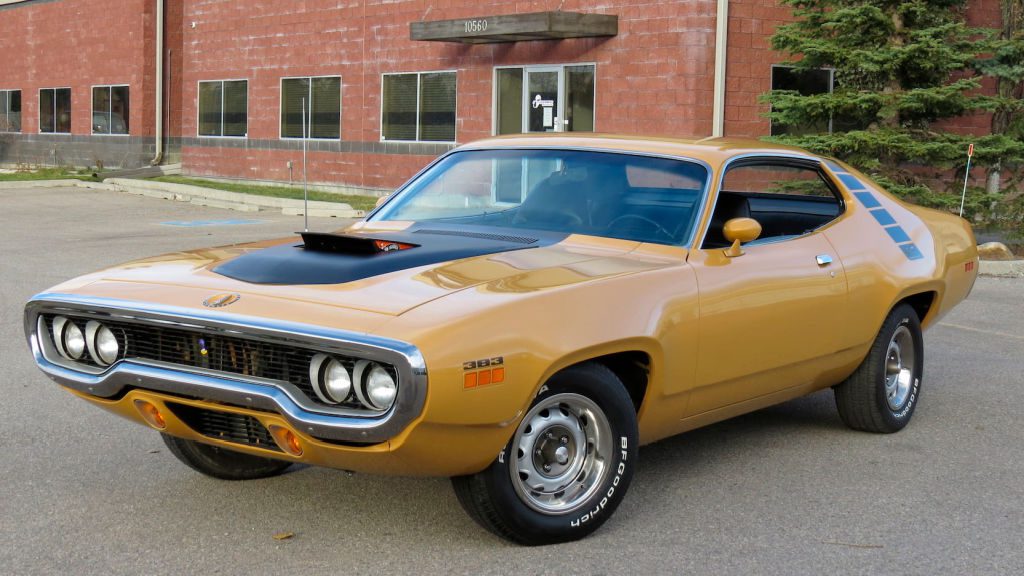
In 1971, the Plymouth Road Runner underwent a significant redesign (Gen 2), which included a new grille, loop bumper, side marker lights, and taillights. Available with a 340 cubic inch V8 engine, producing 275 horsepower and 340 lb-ft of torque; 383 cubic inch V8 engine, producing 300 horsepower and 335 lb-ft of torque; 440 cubic inch V8 engine, producing 370 horsepower and 480 lb-ft of torque. The 1971 Road Runner was only available as a two-door hardtop.
- Wheelbase: 115 inches
- Weight: 3,450-4,060 pounds
- Number Built: 13,664
- Base Price: $3,289
Production Numbers
| Body Style | Engine | Production Numbers |
| Hardtop | 340 | 1,681 |
| 383 | 11,682 | |
| 426 | 55 | |
| 440+6 | 246 | |
| Total (USA) | 13,664 |
1972 Road Runner
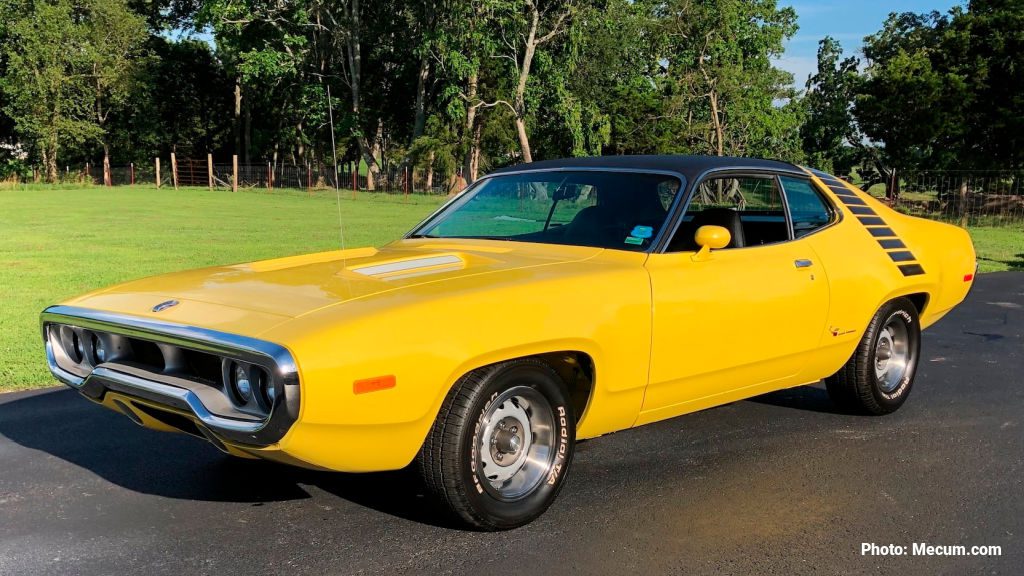
The 1972 Plymouth Road Runner received minor updates, including a new grille, side marker lights, and taillights. It was available with three performance engine options, including a 340 cubic inch V8 engine, producing 240 horsepower and 290 lb-ft of torque; a 400 cubic inch V8 engine, producing 255 horsepower and 375 lb-ft of torque; 440 cubic inch V8 engine, producing 280 horsepower and 410 lb-ft of torque. Chrysler claimed not to have produced any 440+6 models in 1972, yet at least two documented examples exist, supporting the 1972 sales brochure, which mentioned them as an option. The 1972 Road Runner was available only as a two-door hardtop.
- Wheelbase: 115 inches
- Weight: 3,400-3,940 pounds
- Number Built: 7,628
- Base Price: $3,086
Production Numbers
| Body Style | Engine | Production Numbers |
| Hardtop | 340 | |
| 400 | ||
| 440 | ||
| Total | 7,628 |
1973 Road Runner
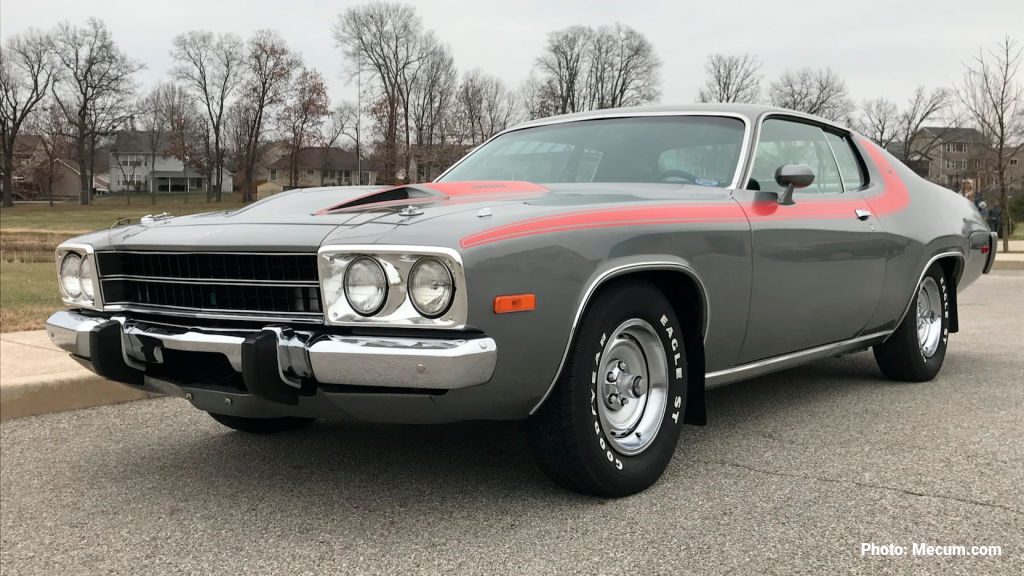
The 1973 Plymouth Road Runner was slightly redesigned, including a new hood, grille, bumpers, and taillights. Engine options included a 318 cubic inch V8 engine, producing 170 horsepower and 270 lb-ft of torque; a 340 cubic inch engine, producing 235 horsepower and 295 lb-ft of torque; a 400 cubic inch V8 engine, producing 260 horsepower and 335 lb-ft of torque, and a 440 cubic inch V8 engine, producing 280 horsepower and 380 lb-ft of torque. Whenever the 440 was ordered, the Road Runner automatically received GTX emblems on either side of the hood scoops. The 1973 Road Runner was only available as a two-door hardtop.
- Wheelbase: 115 inches
- Weight: 3,395-3,715 pounds
- Number Built: 19,056
- Base Price: $3,196
Production Numbers
| Body Style | Engine | Production Numbers |
| Hardtop | 318 | |
| 340 | ||
| 400 | ||
| 440 GTX | 749 | |
| Total | 19,056 |
1974 Road Runner
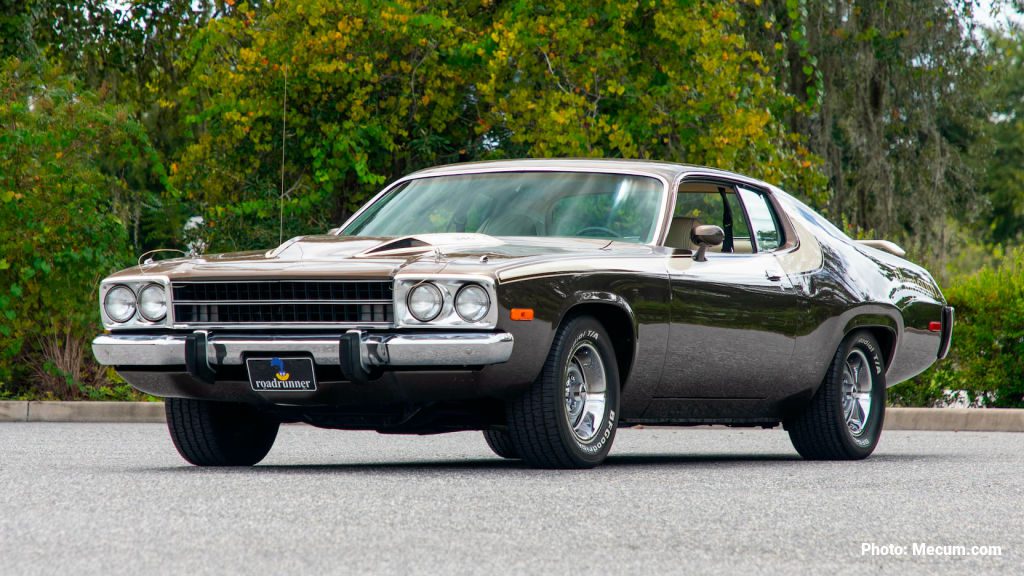
The 1974 Plymouth Road Runner was virtually indistinguishable from the 1973 model year. Engine options included a 318 cubic inch V8 engine, producing 170 horsepower and 265 lb-ft of torque; a 360 cubic inch V8 engine, producing 245 horsepower and 320 lb-ft of torque; a 400 cubic inch V8 engine, producing 250 horsepower and 375 lb-ft of torque, and a 440 cubic inch V8 engine, producing 275 horsepower and 375 lb-ft of torque. The 1974 Road Runner was only available as a two-door coupe.
- Wheelbase: 115 inches
- Weight: 3,395-3,715 pounds
- Number Built: 11,355
- Base Price: $3,092
Production Numbers
| Body Style | Engine | Production Numbers |
| Hardtop | 318 | |
| 340 | ||
| 400 | ||
| 440 GTX | 386 | |
| Total | 11,555 |
Third Generation: 1975-1980
The third-generation Plymouth Roadrunner was downsized to meet new fuel economy regulations and was available in coupe and sedan body styles. It came standard with a 318 cubic inch V8 engine, and the option to upgrade to a 360 cubic inch V8 was also available.
1975 Road Runner and Beyond
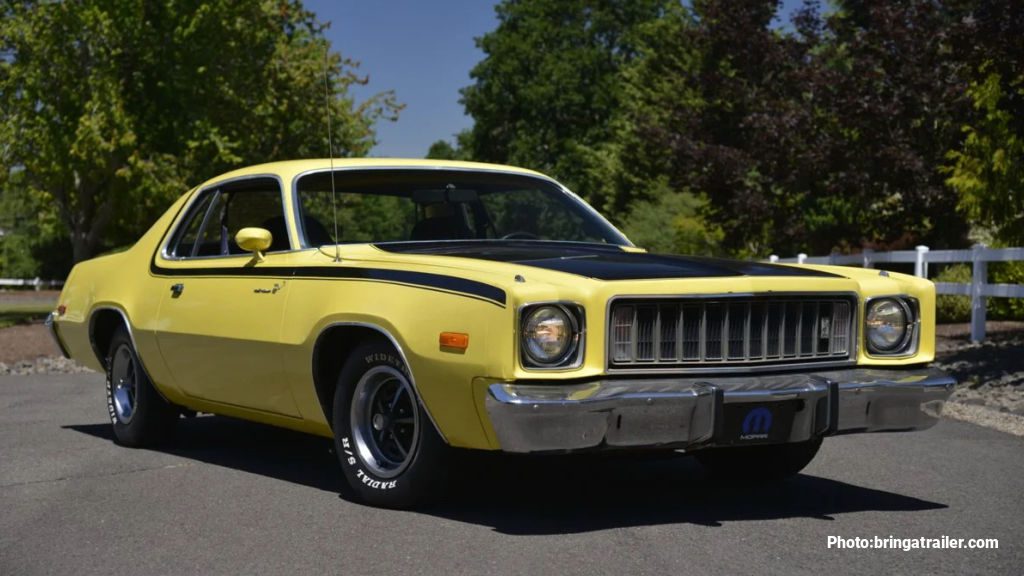
The Plymouth Roadrunner, an iconic American muscle car, saw a significant change in its design and performance starting in 1975. As the automotive landscape shifted due to new safety and emissions regulations, the once-mighty Roadrunner underwent a series of transformations to adapt to the changing times. While these later models often sparked controversy among enthusiasts, they showcased Plymouth’s attempts to preserve the essence of the Roadrunner while complying with the regulatory environment.
| Year | Highlights |
|---|---|
| 1975 | Redesigned as a two-door coupe based on the Fury platform, featuring a 318 cubic inch V8 engine and a more fuel-efficient design. |
| 1976 | Introduction of the Volare Roadrunner, now built on the new F-body platform, with an optional 360 cubic inch V8 engine. |
| 1977 | New T-tops, power sunroof options, and a slight increase in horsepower for the 360 cubic inch V8 are available. |
| 1978 | Styling updates, including a revised grille and taillight designs, as well as the addition of a standard 225 cubic inch Slant-6 engine. |
| 1979 | Last year the 360 cubic inch V8 engine. |
| 1980 | The final year of production for the Plymouth Roadrunner, now equipped with a 318 cubic inch V8 engine and adorned with the iconic horn decals. |
Conclusion
The Plymouth Road Runner was a legendary muscle car that left a lasting impact on the automotive industry. From its debut in 1968 to its discontinuation in 1980, it was known for its aggressive styling, powerful engines, and affordable price tag. However, the first-generation models from 1968-1970 are often considered the most iconic.
During this period, the Road Runner gained a reputation as a no-frills muscle car that delivered impressive performance without breaking the bank. With a stripped-down interior, lightweight body, and powerful V8 engines, the Roadrunner was a true driver’s car that appealed to enthusiasts and thrill-seekers alike.
Despite challenges from increasing emissions regulations and fuel economy concerns, the Plymouth Road Runner remained a respected muscle car model throughout the first half of the 1970s. While later years saw changes to the design and engine options, the spirit of the Road Runner mostly remained intact.
Related Questions
The Plymouth GTX and Road Runner are muscle cars produced by Plymouth in the 1960s and 1970s. The GTX was introduced in 1967 and was marketed as a more luxurious and upscale version of the Road Runner. On the other hand, the Road Runner is a budget muscle car designed to be affordable for the average buyer. introduced in 1968, it was also marketed as having a stripped-down, no-frills appearance, while the GTX had more luxurious features and a more refined exterior.
Take Our Poll!
"*" indicates required fields

Ryan Wheaton
Ryan has owned muscle cars since 1986 and currently owns a 1972 Dodge Charger Rallye. He combines passion and experience to create engaging content for fellow muscle car enthusiasts. In 2018, he founded Muscle Cars Illustrated, authoring hundreds of articles on tips, history, and trends in the muscle car industry. He attends national car shows, auctions, and museums to stay current with the latest developments in the muscle car industry.
